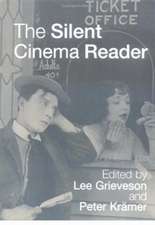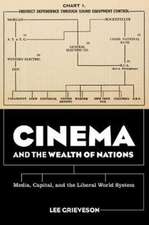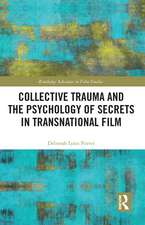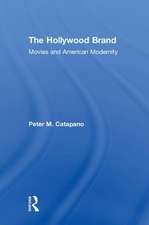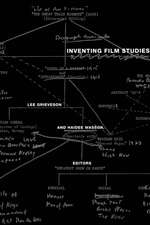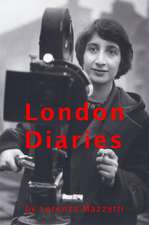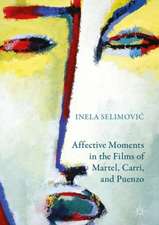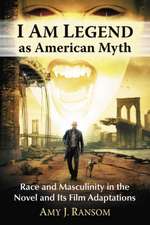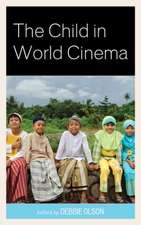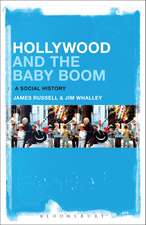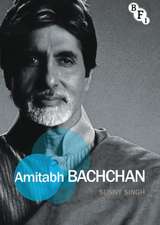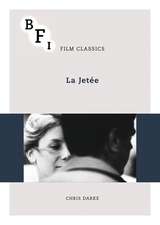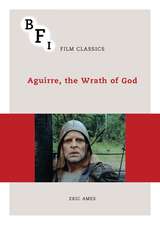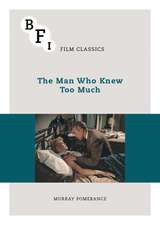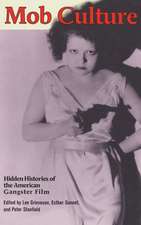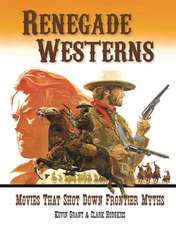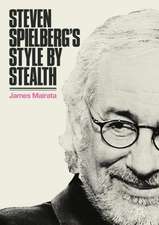Film and the End of Empire: Cultural Histories of Cinema
Editat de Colin Maccabe, Lee Grievesonen Limba Engleză Paperback – 6 noi 2011
| Toate formatele și edițiile | Preț | Express |
|---|---|---|
| Paperback (1) | 236.30 lei 6-8 săpt. | |
| Bloomsbury Publishing – 6 noi 2011 | 236.30 lei 6-8 săpt. | |
| Hardback (1) | 602.34 lei 3-5 săpt. | |
| British Film Institute – 7 noi 2011 | 602.34 lei 3-5 săpt. |
Preț: 236.30 lei
Preț vechi: 262.69 lei
-10% Nou
Puncte Express: 354
Preț estimativ în valută:
45.22€ • 49.10$ • 37.99£
45.22€ • 49.10$ • 37.99£
Carte tipărită la comandă
Livrare economică 22 aprilie-06 mai
Preluare comenzi: 021 569.72.76
Specificații
ISBN-13: 9781844574230
ISBN-10: 1844574237
Pagini: 320
Ilustrații: 27 b/w photos
Dimensiuni: 155 x 235 x 20 mm
Greutate: 0.62 kg
Ediția:2011
Editura: Bloomsbury Publishing
Colecția British Film Institute
Seria Cultural Histories of Cinema
Locul publicării:London, United Kingdom
ISBN-10: 1844574237
Pagini: 320
Ilustrații: 27 b/w photos
Dimensiuni: 155 x 235 x 20 mm
Greutate: 0.62 kg
Ediția:2011
Editura: Bloomsbury Publishing
Colecția British Film Institute
Seria Cultural Histories of Cinema
Locul publicării:London, United Kingdom
Caracteristici
Brings together world-renowned scholars from around the world to address, for the first time, the intricate connections between cinema and colonialism in the twentieth century
Notă biografică
LEE GRIEVESON is Director of Film Studies at University College London.COLIN MACCABEis Distinguished Professor of English and Film at the University of Pittsburgh and Associate Director of the London Consortium
Cuprins
Introduction: Film at the End of Empire; L.Grieveson .- Great Games: Film, History and Working-Through Britain's Colonial Legacy; P.Gilroy.- PART I: EMPIRE AT WAR.- The Last Roll of the Dice: Morning, Noon and Night, Empire, and the Historiography of the Crown Film Unit; M.Stollery.- India on Film: 1939-1947; R. Osborne.- Official and Amateur: Exploring Information Film in India, 1920s-1940s; R.Vasudevan.- Who Needs a Witch Doctor? African Activists and the Re-Imagining of Africa in the 1940s; P.Zachernuk.- 'Johnny Gurkha Loves a Party': The Colonial Film Archive and the Racial Imaginary of the Worker-Warrior; V.Ware.- PART II FILM/GOVERNMENT/DEVELOPMENT.- From the Inside: The Colonial Film Unit and the Beginning of the End; T.Rice.- Images of Empire on Shifting Sands: the Colonial Film Unit in West Africa in the Post-War Period; R.Smyth.- The End of Empire: The Films of the Malayan Film Unit in 1950s British Malaya; H.Muthalib.- PART III: PROJECTING AFRICA.- Projecting the Modern Colonial State: Mobile Cinema in Kenya; C.Ambler.- Poverty and Development as Themes in British Films on the Gold Coast, 1927-1957; G.Austin.- Mumbo-Jumbo, Magic and Modernity: Africa in British Cinema, 1946-1965;
Textul de pe ultima copertă
The
number
of
people
living
under
British
colonial
rule
in
the
two
decades
after
1945
shrank
from
700
million
to
5
million,
amid
the
fractious
and
blood-soaked
decomposition
of
the
largest
and
most
ambitious
imperial
venture
in
human
history.
What
roles
did
film
play
across
the
period
1939–65,
in
the
face
of
rapidly
changing
geopolitics?
What
were
the
varied
ways
in
which
film
registered
and
projected
colonial
and
neocolonial
discourse
and
practice?
What
do
these
films
now
reveal
about
the
fantasies
and
realities
of
colonial
rule
and
its
ostensible
dissolution?Film
and
the
End
of
Empirebrings
together
leading
international
scholars
to
address
these
questions.
Contributors examine the enmeshing of cultural representation and political and economic control, and demonstrate the ways in which state and non-state actors harnessed film to instructional and pedagogical functions, putting media to work in order to shape the attitudes and conduct of populations to sustain colonial and neocolonial governmental order. They focus on a wide range of material, including newsreels; state-produced documentaries; corporate-financed non-fiction films; and narrative fiction films telling stories about the past and present of imperialist endeavour. At the same time, they address the institutions that were formed to foster colonial film, and develop new non-theatrical forms of global distribution and exhibition.Film and the End of Empireopens up a fascinating new area of film history and will be indispensable reading for those interested in global cinema history, didactic and non-theatrical cinema, film and geopolitics, and those interested in Britain's colonial history and its continuing legacy. This book was produced in conjunction with a major new website housing freely available materials and films relating to British colonial cinema, www.colonialfilm.org.uk, and a companion volume entitledEmpire and Film.
Contributors examine the enmeshing of cultural representation and political and economic control, and demonstrate the ways in which state and non-state actors harnessed film to instructional and pedagogical functions, putting media to work in order to shape the attitudes and conduct of populations to sustain colonial and neocolonial governmental order. They focus on a wide range of material, including newsreels; state-produced documentaries; corporate-financed non-fiction films; and narrative fiction films telling stories about the past and present of imperialist endeavour. At the same time, they address the institutions that were formed to foster colonial film, and develop new non-theatrical forms of global distribution and exhibition.Film and the End of Empireopens up a fascinating new area of film history and will be indispensable reading for those interested in global cinema history, didactic and non-theatrical cinema, film and geopolitics, and those interested in Britain's colonial history and its continuing legacy. This book was produced in conjunction with a major new website housing freely available materials and films relating to British colonial cinema, www.colonialfilm.org.uk, and a companion volume entitledEmpire and Film.














